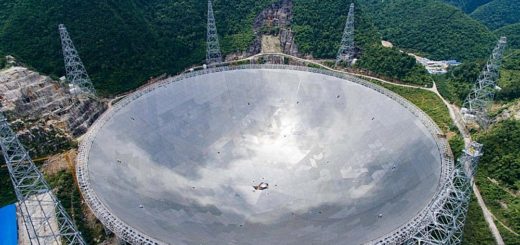Scientists find new evidence of the existence of Planet Nine

At this point, with so much evidence of its accumulated existence in favor, only a direct observation is needed for the mysterious Planet Nine (formerly Planet X) to officially become part of our planetary family.
Recent research by the University of Michigan offers new evidence that reinforces the hypothesis about the existence of the elusive planet in our solar system.
The study—like many prior studies—focused on trans-Neptunian objects (TNO’s), a group of rocky celestial bodies that orbit the Sun farther than Neptune, the farthest planet in the solar system.
According to some scientists, the orbits of these objects indicate that their existence goes back more than a billion years when our solar system was much younger.
However, other scientists are wondering what keeps the TNO’s in their present orbits, because, over such a long period of time, these celestial bodies should have collided with a planet; or could even have been attracted and devoured by the Sun or fired into deep space by the gravitational force of other planets.
So, what keeps them in place?
In order to determine the possible behaviors of TNO’s, whether or not considering the presence of the hypothetical Planet Nine, the researcher Juliette Becker and her colleagues from the academic center performed large-scale computer simulations.
The simulation allowed to observe a phenomenon called resonance jumps, a process in the course of which the trans-Neptunian objects “jump” between two stable orbits, thus avoiding their expulsion from the solar system.
The different simulation scenarios proved that the hypothetical gravitational influence of the supposed ninth planet causes “TNO’s to remain stable for longer” meaning that Planet Nine would be one of the main the factors that would help explain how “our solar system exists in its present form” Becker said.
Thus, the hypothetical ninth planet would be the missing piece of the puzzle, a celestial body that “intercepts” the TNO’s when they are dislocated from their orbits by Neptune’s influence and places them in a secondary orbit, preventing them from being lost in outer space.
Of course, all of this is great and wonderful information but we still have not been able to spot the elusive world in the sky.
Hopefully in the near future—and which countless astronomers on the lookout—we will come across the elusive alien world and add another planet to our solar system’s cosmic family.



 Creators of mankind
Creators of mankind Description of “Tall white aliens”
Description of “Tall white aliens” Where they came from?
Where they came from? About hostile civilizations
About hostile civilizations The war for the Earth
The war for the Earth “Tall white aliens” about eternal life
“Tall white aliens” about eternal life Video: “Nordic aliens”
Video: “Nordic aliens” Aliens
Aliens Alien encounters
Alien encounters The aliens base
The aliens base UFO
UFO Technology UFO
Technology UFO Underground civilization
Underground civilization Ancient alien artifacts
Ancient alien artifacts Military and UFO
Military and UFO Mysteries and hypotheses
Mysteries and hypotheses Scientific facts
Scientific facts


















